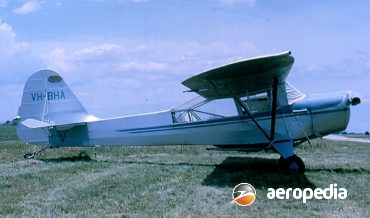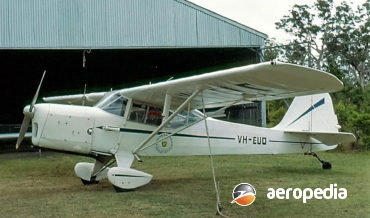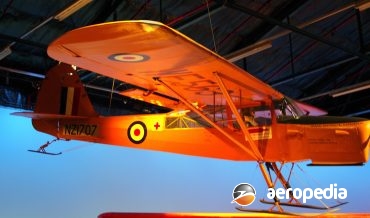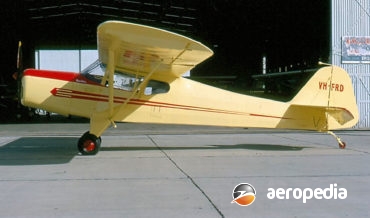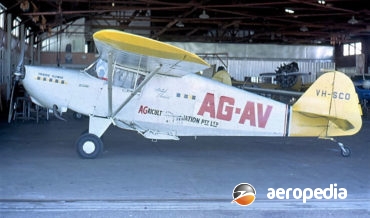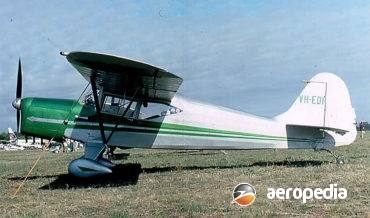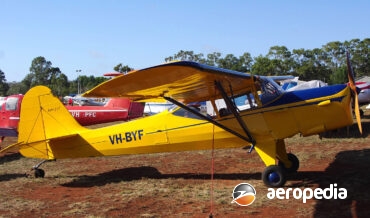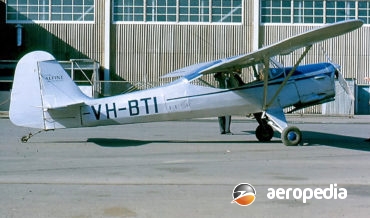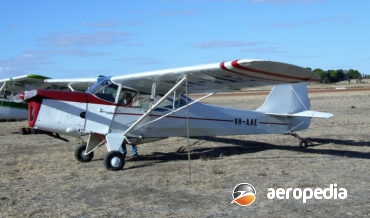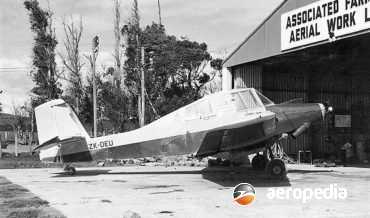All Contents
Contents
The Auster series of light aircraft was developed from the Taylorcraft series of light cabin monoplanes designed in the United States by C Gilbert Taylor, who had emigrated from Nottingham, and produced by Taylorcraft.
David C. Eyre
- May 8, 2019
In 1950 an Autocrat airframe was converted by Auster to J-1B configuration, being fitted with a Gipsy Major I engine and a larger horn balanced rudder.
David C. Eyre
- May 8, 2019
Following the cessation of hostilities in World War II, the Auster company decided to develop the AOP-6 air-observation-post aircraft for postwar use by the RAF.
David C. Eyre
- May 8, 2019
The J-2 Arrow was the first post-war touring aircraft designed by Auster Aircraft Ltd as a successor to the pre-war Taylorcraft Plus C monoplane.
David C. Eyre
- May 8, 2019
Because of import restrictions on American-built engines for some years after World War II, Auster Aircraft decided to fit a British-built engine (the Cirrus Minor) to an Auster Arrow airframe.
David C. Eyre
- May 8, 2019
The three-seat Auster J-5 Autocrat was basically a more powerful version of the J-1 Autocrat but, unlike the similarly engined Aiglet and Alpha, the J-5 did not have the larger vertical tail surfaces provided on those aircraft to compensate for the extra power.
David C. Eyre
- May 8, 2019
In 1962 Agricultural Aviation Pty Ltd of Archerfield, QLD, decided to convert an Auster J-5 Adventurer for agricultural duties, converting it from a three-seater to a single-seater, fitting an American Lycoming six-cylinder engine and installing a hopper in the rear of the cockpit and spray bars.
David C. Eyre
- May 8, 2019
Following the success of the three-seat Autocrat, Auster’s chief designer, R E Bird used the experience gained from the design of the Alpha, which did not proceed to production in any numbers, and came up with a four-seater of similar specifications.
David C. Eyre
- May 8, 2019
Despite the appellation ‘Aiglet’, the J-5F series was not derived from the J-1B Aiglet. The J-5F was basically a J-5 with a widened and strengthened fuselage to permit the Aiglet Trainer to be fully aerobatic, the only Auster to be fully certified in this role.
David C. Eyre
- May 8, 2019
The J-5G was a more powerful variant of the J-5B and had some strengthening to allow the installation of a more powerful engine, this involving the fitting of several extra tubular front members.
David C. Eyre
- May 8, 2019
The designation J-5H was applied to one aircraft (VH-ADS) and the designation J-5GL was applied to a J-5G which (ZK-CXA) was rebuilt in New Zealand to take a Lycoming engine. The J-5H was registered in Australia. This aircraft was built as a J-5B (VH-ADS - c/n 2047) and was imported
David C. Eyre
- May 8, 2019
The Alpine series was introduced to the Auster range in 1955, being a development specially for operations from high-altitude airfields in hot climates.
David C. Eyre
- May 8, 2019
Introduced in 1950, the prototype J-1B Aiglet was a converted Autocrat with a Gipsy Major 1 engine and a larger horn-balanced rudder.
David C. Eyre
- May 8, 2019
The Auster AOP-9 was designed specifically for the British Army Air Corps as an air-observation-post aircraft to replace previous Auster variants which had been civil designs converted to fill that role.
David C. Eyre
- May 8, 2019
The Agricola agricultural aircraft was designed by the chief designer of Auster Aircraft Ltd, R E Bird, in the 1950s following a tour he made of New Zealand to examine the requirements of agricultural operators.
David C. Eyre
- May 8, 2019
The Auster series was initially derived from the Taylorcraft Model D series and was built for the British Army for the air-observation-post role.
David C. Eyre
- May 8, 2019
During the latter stages of World War II the Taylorcraft design team decided to build a lower powered version of the Auster Mk 5 and a prototype, originally known as the Taylorcraft Auster Mk 5 Series J-1 Autocrat, was built and flown.
David C. Eyre
- May 8, 2019
Recent Comments
Archives
Categories
- No categories
Categories
- No categories
Latest Posts
Newsletter

